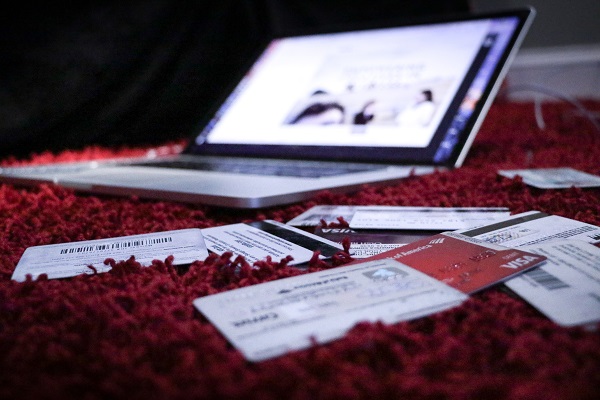Take this amazing relationship to the next level with the Reward Stamp App by reward programs.
What Is a Customer Reward Program?
Take this amazing relationship to the next level. When an organization offers initiatives to promote a specific behaviour, it is known as a rewards programme. This is a marketing tactic that allows businesses to create brand loyalty while giving the impression that the customer is receiving something as a bonus. Globally customers are happy to use the Reward Stamp App.
Types
Bonuses are a marketing approach used by a variety of businesses. You may earn points by using your credit card, purchasing things from a certain brand, or even working for your small business rewards program.
There are three sorts of rewards credit cards: cashback, points, and miles. Each card has its own set of rewards and structures, with the ability to add a lot of value to your wallet.
Here’s everything you need to know about credit card rewards or reward programs for customers loyalty, including what they are, how they operate, and how to maximise your rewards earning potential.
Types of credit card rewards programs
Cashback, points, and miles are the 3 kinds of rewards points cards that are available. Each one caters to a specific amount of spending. Similarly, different credit card rewards schemes provide varied options for redeeming points for specific objectives. Because there are so many different kinds of cards and programmes, it’s crucial to know what you’re looking for before you go searching for one creating a rewards program.
Cashback
Cashback is an easy method to be paid for using your card to make purchases. On qualified purchases made with the card, you’ll get a proportion back in cash. There are tier, flat-rate, and recurring bonus segments in the rewards programmes.
A few cards, like the Chase Freedom Unlimited®, contain a mix of frameworks, such as 5% back on travel bought thru the Start chasing Ultimate Rewards, 5% cashback on supermarket buying (excluding Target and Walmart buying) on up to $12,000 invested in the first year, 3% at eateries and pharmacies, and an unrestricted 1.5 per cent on all other buying.
Points
Borrowers are often rewarded with a fixed number of reward points per dollar spent and a 1:1 redemption conversion when using points cards. The rates of reward offers, exchange rates, and redeeming possibilities vary by issuer. It has been tested and the success of loyalty rewards programs for small business.
The Chase Sapphire Preferred® Card, for example, earns 5X points on Chase Ultimate Rewards travel, 3X credits on meals, and 2X credits on all other travel purchases. It also gives you 1X points for every dollar spent on other purchases. Travel, cashback, statement credits, gift cards, and goods are all choices for Chase Ultimate Rewards redemption.
Miles
Travel credit cards also called miles tokens, allow you to use your points to purchase travel-related things and perks such as airline tickets, hotel stays, and accessibility to airport lounges. These cards reward you with miles for each item you buy on qualified purchases, which are often travel-related but may also include non-travel-related items.
Function
Rewards programmes work by awarding points to the receiver whenever he performs a specific action, such as purchasing something or using his credit card. The purchaser then exchanges his points for company presents.
Check our partnership program Reward Stamp App
Benefits
Gift cards, cashback, or free or reduced offerings from the firm are all possibilities. When you book a flight, for example, an airline will grant you a set number of reward points, which you can then claim for a free flight.
A reward programme is an excellent method to surprise and delight your consumers while also demonstrating your concern. As per a recent Experian research, 75 per cent of loyalty programmes in the United States yield a return on investment. This is, without a doubt, the most important benefit for firms that invest in reward loyalty programmes. If you’re also trying to justify a reward program’s cost vs. benefit.
1. Encourage customers to buy from you again.
2. The average order value increased.
3. Less expensive consumer acquisition
4. Increase Stickiness in the Face of Competition
5. Customers’ Discounts Should Be Reduced
6. Increase the rate of conversion
7. Have an impact on product selection
8. Develop a detailed user profile
9. Boost user-generated content
10. Boost Social Participation
What is a rewards credit card?
For eligible transactions, rewards credit cards offer cash back, points, or miles. The rate per dollar spent is used to determine your incentives. Consider the following scenario:
- Most reward cards provide a flat rate, which means you’ll get a specific sum or percentage back on every purchase.
- On purchases in some categories, other cards receive higher rates (called tiers).
- A rotational bonus category is a sort of cash back card in which a list of higher-earning categories rotates every quarter and you must unlock them.
- A few cards combine flat-rate categories with tiered categories and changing bonus categories.
Whenever it comes to selecting the best card for you, consider the issuer’s rewards programme, your spending patterns, and the card’s essential features. You possibly miss out on the potential to take rewards and gain the most value if the card that you select doesn’t match your purchasing patterns or lifestyle.
Check our partnership program Reward Stamp App
How do cash-back rewards programs work?
When you’re using a cashback credit card to make a qualifying purchase, you’ll get a percentage of your purchase back in cash. Based on the card, you can receive cash back at different prices in different segments.
The redemption procedure is usually quite straightforward. Your issuer should have a redeemable gateway on its website that allows you to redeem in a variety of methods. Statement credits, direct deposits to a bank account, items, and gift cards are the most typical possibilities. Charitable donations are also permitted by some issuers.
Verify with your provider before redeeming to make sure that you understand the requirements for cash back redemption and that you’re obtaining the greatest deal (typically statement credits or direct deposits).
Check our partnership program Reward Stamp App
How points rewards programs work
When you’re using a cashback credit card to make a qualifying purchase, you’ll get a percentage of your purchase back in cash. Based on the card, you can receive cash back at different prices in different segments.
The redemption procedure is usually quite straightforward. Your issuer should have a redeemable gateway on its website that allows you to redeem in a variety of methods. Statement credits, direct deposits to a bank account, items, and gift cards are the most typical possibilities. Charitable donations are also permitted by some issuers.
Verify with your provider before redeeming to make sure that you understand the requirements for cash back redemption and that you’re obtaining the greatest deal (typically statement credits or direct deposits).
How travel and miles programs work
Credit card miles work similarly to points but are mostly connected with travel cards. You’ll receive a specific number of miles for every transaction you make, just like with rewards cards, but the rate may be higher in particular purchase categories.
If you’re buying a flight with your miles, you can usually redeem them by going into your profile during the booking system. The same is true for reserving a hotel. Many travel cards allow you to transfer your miles to the issuer’s travel partners, which are mainly airlines and hotels.
How to choose a rewards credit card
When it comes to selecting a rewards card, consider whether the type of credit card rewards programme it offers aligns with your objectives and spending habits. Think about the following scenarios:
- A plain cash back card might be your best pick if you mostly use your credit card for everyday expenditures like petrol and groceries, without a big concentration of spending in any one category. A tiered or rotating bonus category card could result in higher profits, but it will almost certainly necessitate more careful purchasing on your part.
- A travel card is ideal for those who want to earn rewards to help defray the costs of their regular excursions. Regular travel cards and co-branded cards that reward you for commitment to a certain airline or hotel brand are also alternatives. A points card may provide you a variety of redemption possibilities, such as applying them to travel purchases or receiving cash back. You’ll probably need to keep an eye on the value fluctuations among your redemption possibilities if you have this type of card.
You should also look into interest rates, annual fees, and sign-up bonuses. All of these elements can influence the card’s total value and the value of the points you earn.
Check our partnership program Reward Stamp App






